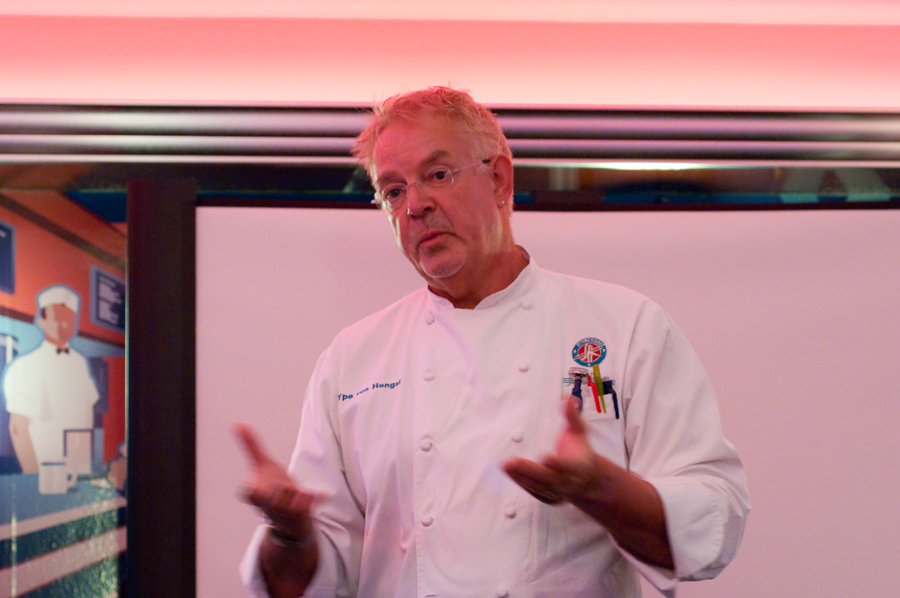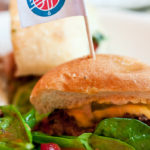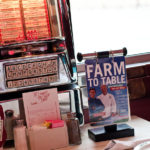For more photos, visit http://staceyviera.zenfolio.com/silverdiner
By: Stacey Viera
After a blogger event at the Clarendon Silver Diner in Arlington, Virginia, last week, I started thinking about how I feel about brands with which I grew up in the ‘80s and ‘90s, particularly foods and restaurants. I want to see them do well, to prosper, so that perhaps one day I could provide my own children with the food experiences of my childhood.
Chef Daniel Giusti was onto something when he talked about how he feels about McDonald’s in a recent interview. Maybe our love for such brands is about expectations or nostalgia or both. For me, I also enjoy it when a good brand flourishes and provides an economic benefit to society. That’s why for the past several years, I kept thinking, “What has happened to the Silver Diner?” I hoped that it wasn’t about to go the way of the Bob’s Big Boy we used to frequent near Langley Park, Maryland.
I’ll always remember getting excited about enjoying a World’s Smallest Sundae at the Rockville Pike Silver Diner. What a treat at the bargain price of $1.99! Growing up in Montgomery County, Silver Diner was the affordable family restaurant, and we visited often. But, frankly, as I entered adulthood, there wasn’t much to get excited about when it came to the food, so I stopped going.
But it’s a new era for the Silver Diner. An era borne out of a commitment to healthier food sourced locally. Local local local. The buzzword of the decade. We’ve heard from Whole Foods that local is a 275-mile radius, Mixt Greens says it’s 300, and Silver Diner prefers suppliers within 250 miles of their Maryland, Virginia and New Jersey restaurants.
Whatever “local” means, diners in the Mid-Atlantic can now get produce, milk, eggs, meats and more sourced from neighboring states. Eggs from Lancaster, Pennsylvania, strawberries grown in Delaware shipped by Coastal Sunbelt Produce, and coffee from Charlottesville, Virginia-based Greenberry’s Coffee & Tea.
A renewed commitment to the community comes at a price, Washingtonians. You can’t get organic farm-fresh greens and pay less green to eat them, too.
Robert Giaimo, Silver Diner, Inc. co-founder and President and CEO said, “Diners are reflective of how people eat today…To get eggs from Lancaster, Pennsylvania, direct to Silver Diner, it costs about fifty cents more per omelet. When we surveyed the consumer, he said he’d pay more…This is a farm-to-table [operation] on a much, much broader basis than ever before. With this menu, we found that we had to go all the way with consumers,” and completely revamp the restaurant’s supply chain.
In fact, going “all the way” also means that Silver Diner had to increase food costs by nearly $375,000, but their team sees it as an investment in local businesses and the people they feed.
Silver Diner Chef and Co-Founder Ype (pronounced EE-puh) Von Hengst recounted the story of growing up in Holland and having farm-fresh milk, eggs and produce literally outside his backyard. It reminded me of when my Grandma Tillie – I call her “Big Mama” – told me about getting rockfish out of the Chesapeake Bay at the fish market on the dock in Annapolis, Maryland, where she grew up. It came right out of the water, through the back door, and into her mother’s shopping basket.
Aren’t those lovely stories? The truth is, there were a lot fewer mouths to feed 30, 40, especially 70 years ago, so we have to make some compromises when it comes to food sources if we want to feed humanity healthy meals. Get real, folks. It is what it is. We can’t feed people wild strawberries; we must farm them, and farm them right. The same goes for fish, chicken, and so many other foods.
And this notion of farming things “right,” isn’t a destination, but in the words of Von Hengst, “it’s a journey. People in America are going back to basics. Each time, we add something to [make it better].” Von Hengst added that there is also a significant benefit to the local economy as well as the health of the casual chain’s clientele. “We must take care of the local market. We have a moral obligation to give people great food and a better product.”
What’s next for Silver Diner? Next month, a healthy eating, anti-obesity program aimed at children. We’re guessing this means a new, more nutrient-rich children’s menu is on its way. And nitrate-free bacon, which makes us wonder, “Will it taste good?” (You know how I feel about bacon! Accept no substitutions!)
I owe you, good reader, a big thanks for allowing me to wax nostalgic about the Silver Diner, and we all owe the team that put this new initiative in place a huge thank you for sticking their necks out to bring Mid-Atlantic diners the healthy food that we crave (while keeping some of the greasy spoon items that we expect at a diner).
The new menu is being rolled out over the next several weeks, and is already available in at least half of the 17 Silver Diner locations. Try the new Grilled Wasabi Salmon Sliders for an infusion of Omega-3s, a salad with some of the sweetest strawberries around, and treat yourself to the gluten-free Mini Brownie Sundae, and let us know what you think of the taste and quality of the new Silver Diner.
Follow the Silver Diner on Facebook and Twitter.
For more photos, visit http://staceyviera.zenfolio.com/silverdiner







[…] Stacey Viera writes at Every Food Fits, Silver Diner has launched a new menu that includes fresh, healthy, locally-sourced options. Robert […]
[…] Like I said I’m no food critic, if you want more informed opinions of the the new menu please consult my good friends at DC Gluttony and Every Food Fits. […]
[…] you’ve read the story about how the Silver Diner has changed their menus, supply chain, business model and invested […]